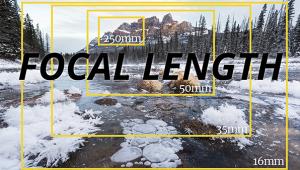Spring Cleaning: Some News Flashes from the Past
Commentary
Spring Cleaning: Some News Flashes from the Past
by George Schaub
The rush of events in the past few years has left us all fairly breathless, what with the pace of change wrought by digital. As product trumps product, and new operating systems and formats rush to grab our attention, older systems and gear quickly fall by the wayside. Some have come to rest in my Museum of Photographic Obsolescence (MOPO). The halls of that hallowed institution have become quite crowded of late; a new wing is being built as you read this.
You needn’t go too far back to find tech and gear that vie for space in that exhibition hall. Look through the back booths of a book store and you might find a few ragged copies of 1940-1950 era Pop Photo or even good old Modern Photography and been amused by the proliferation of ads for movie projectors, tape recorders and even some old Federal enlargers, once staples on a dealers’ shelves. But I didn’t have to reach that far back to find some goodies and more recent exhibits for the MOPO; indeed, many came to the fore when I did some spring cleaning recently and discovered some clippings from writings past. I thought you might get a kick out of some of the hyperbole and prognostications.
Here’s one, from July of 1984. The lead reads: “Eastman Kodak Company announced its entry into the consumer electronics field at CES last January when it introduced the Kodavision Series 2000 video system.” According to then VP Roger Sharp, ‘Most reactions from dealers indicate they are particularly happy to see ½ inch video cassettes on their shelves... It will provide another incentive by making it easier for people to take electronic home movies and play them back through their VCRs.” Along with a classic hardware entry into the Halls of the MOPO, I counted one major technology and one format that went down the tubes from that release. (Anyone recall Polavision? Yes, that’s in the days when marketers didn’t capitalize mid-word.)
In the same year, there was some prognostication that was not too far off the mark. Buried about five paragraphs down from a frothy lead about the future of video still cameras, Mikio Ashikawa of Toshiba was quoted as reporting that to overcome the resolution hurdle, video still cameras might catch up to film by “not increasing the pixels but in electronic rearrangement of the available information, that is, image enhancement through computers.” The movement of that enhancement from desktop to inside the camera is what marks digital imaging today.
The article goes on to say, “Many scientists (at the SPSE conference in 1984) feel that electronics and film will make a happy marriage, with film serving as the input and electronics taking care of the processing side of the business. One scenario is that film, once developed, would be scanned by a device that converts the information into digital form and then that data would be put through various image producing and enhancing channels.” Well, that wasn’t too bad, even in 1984.
It’s always fun to read ad and promotional copy from years past, only because some of it seems almost naïve in light of what we’re experiencing today. I quote from Nikon copy from 1999 not to pick on Nikon, but to illustrate how quickly things have changed. Indeed, everyone was caught up in the same game.
After a flurry of promotional matters the copy goes on to say: “Now, Nikon asserts that (digital photography) leadership again with the announcement of two new digital cameras—the Coolpix 950 and 700—both of which break the 2 megapixel barrier in the affordable, under $1000 digital camera category. This means that photographers can now record uncompressed TIFF images as large as 6MB, resulting in never-before seen quality in affordable cameras.” The changes this press material mark from just ten years back are glaring. The 2MP cameras are now gone, or relegated to toys; that model category, though non-existent today, would be probably $1300 in 2009 dollars; the camera, if sold now, would probably be 10% of the then asked for price of “under $1000”; and of course TIFF as an in-camera format has for the most part gone away. The memory cards of the time were also quite expensive, and those prices have dropped 80-90% from 1999 as well.
And while we’re on cameras, just for fun I pulled a 1987 PMA report that breathlessly reported “tremendous gains in the electronic still photography field in the past year.” Known then as ESP (electronic still photography) there was the Panasonic Photovision 3100, which recorded 300K images on a 47mm video floppy disk (and anyone who can tell me the difference between “frame” and ‘field” digital still recording gets a free BeeGees greatest hits album—just kidding); the Konica SV-C40 (another 300K unit which could fire off four frames per second in the “higher resolution” frame mode); and the Fujix ES-2P, which delivers “380K images, resulting in higher picture quality than most similar cameras.” These video still cameras have a special hall in the evolutionary exhibits in our MOPO.
One of the most interesting pieces from the yellowing archives was an interview done with Robert C. Davis, then president of Bremson Data Systems, in 1985. In response to what we might see in 1995 (ten years from the date of that interview), Davis said: “The big question on everyone’s mind is whether silver halide based imaging is going away. Everyone’s concerned with that…You may get a system where you dump in a roll of film at one end and out the other will come pictures and negatives all wrapped together, and in between you may get a videotape and a video disk along with it. At that point a (pro) photographer may be showing his proofs on a video screen...The professional may begin to use electronic cameras in the studio. We may get a cartridge, or a floppy disk, and put it in a processor and out will come 11x14s to wallet packages. Package work may bypass film. It all depends on how fast the U.S. and Japan will develop the chips necessary to do that—there’s still the resolution problem to deal with.” Most prescient for 1985 eh?
The mid-eighties saw digital photography as just a glimmer in some engineers’ eyes. In each sector—camera makers and photo processors—the groundwork was being laid for the coming sea changes in photography. The point of me bringing all this up is that we might just be in a similar period today. The changes wrought over event he past three years are incredible. We even have people today who are quite avid photographers who never exposed a picture on a roll of film in their life. Where this might lead, and what formats, gear and technology that are now the hot items will be new entrants in our MOPO, is anyone’s guess. But we can all rest assured that what we see as breakthroughs today will be quickly overtaken by what’s just around the corner. And we might look back in 2029 with similar amusement about how naïve it all seems in 2009. Or will we gain that perspective by 2010?
- Log in or register to post comments












































